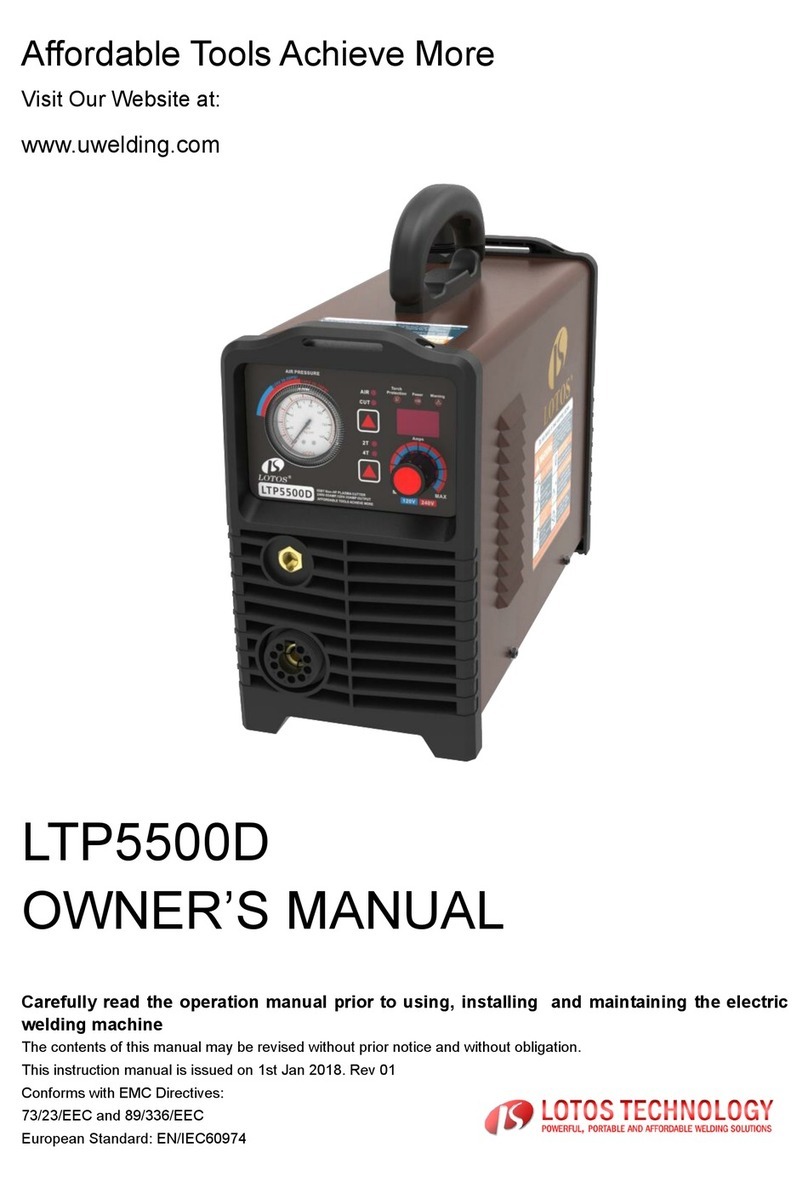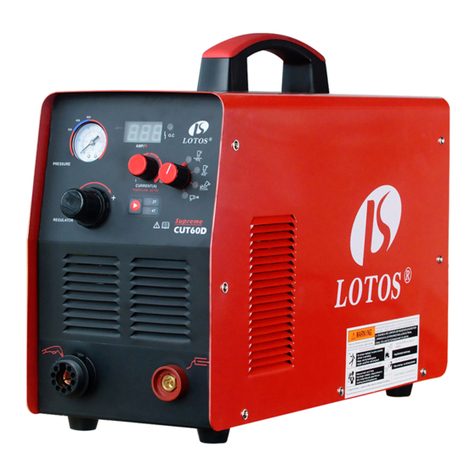
3
ARC WELDER SAFETY WARNINGS
AND PRECAUTIONS
Warning: This product, when used for
welding and similar applications, produces
chemicals known to cause cancer and birth
defects (or other reproductive harm).
ELECTRIC SHOCK can be fatal
The electrode and work (or
ground) circuits are electrically
“hot” when the machine is on. Do
not touch these “hot” parts with your bare skin
or w e t clothing. Protective clothing should be
hole free, dry and ANSI approved. Wear dry,
hole-free gloves to insulate hands.
Do not permit electrically live parts, cables,
or electrodes to contact skin, clothing or
gloves.
This unit draws enough current to cause
serious injury and or death.
Before turning the welder on, check the
welder gun to be sure that there are no
protruding screw heads and that all
insulation is secure.
Insulate yourself from work and ground
using dry insulation. Make certain the
insulation is large enough to cover your full
area of physical contact with work and
ground.
Always be sure the work cable makes a
good electrical connection with the metal
being cut. The connection should be as
close as possible to the area being cut.
Ground the work metal to be cut to a good
electrical (earth) ground.
Maintain the welding torch, work clamp,
power cable and cutting machine in a safe
operating condition. Replace damaged
insulation wherever it is needed.
Never dip the electrode in water for cooling.
When working above floor level, use a
safety belt to protect yourself from a fall
should you get a shock.
Plasma cutting may produce
fumes and gases hazardous to health. Avoid
breathing these fumes and gases. When cutting,
keep your head out of the fume. Use enough
ventilation and/or exhaust at the arc to keep
fumes and gases away from the breathing zone.
In confined spaces or in some circumstances,
outdoors, a respirator may be required.
Additional precautions are also required when
cutting on galvanized steel.
Do not cut in locations near chlorinated
hydrocarbon vapors coming from
degreasing, cleaning or spraying operations.
The heat and rays of the arc can react with
solvent vapors to form phosgene, a highly
toxic gas and other irritating products.
Read and understand the manufacturer’s
instructions for this equipment and the
consumables to be used, including the
material safety data sheet (MSDS) and
follow your employer’s safety practices.
MSDS forms are available from
your welding distributor or from
the manufacturer.
The EMF field
that is
generated during arc welding may interfere with
various electrical and electronic devices such
as cardiac pacemakers.
Anyone using such devices should consult
with their physician prior to performing any
electric welding operations.
Exposure to EMF fields while welding may
have other health effects, which are not
known.
FUMES & GASES can be
dangerous
ELECTRIC&MAGNETIC
FIELDS may be dangerous






























